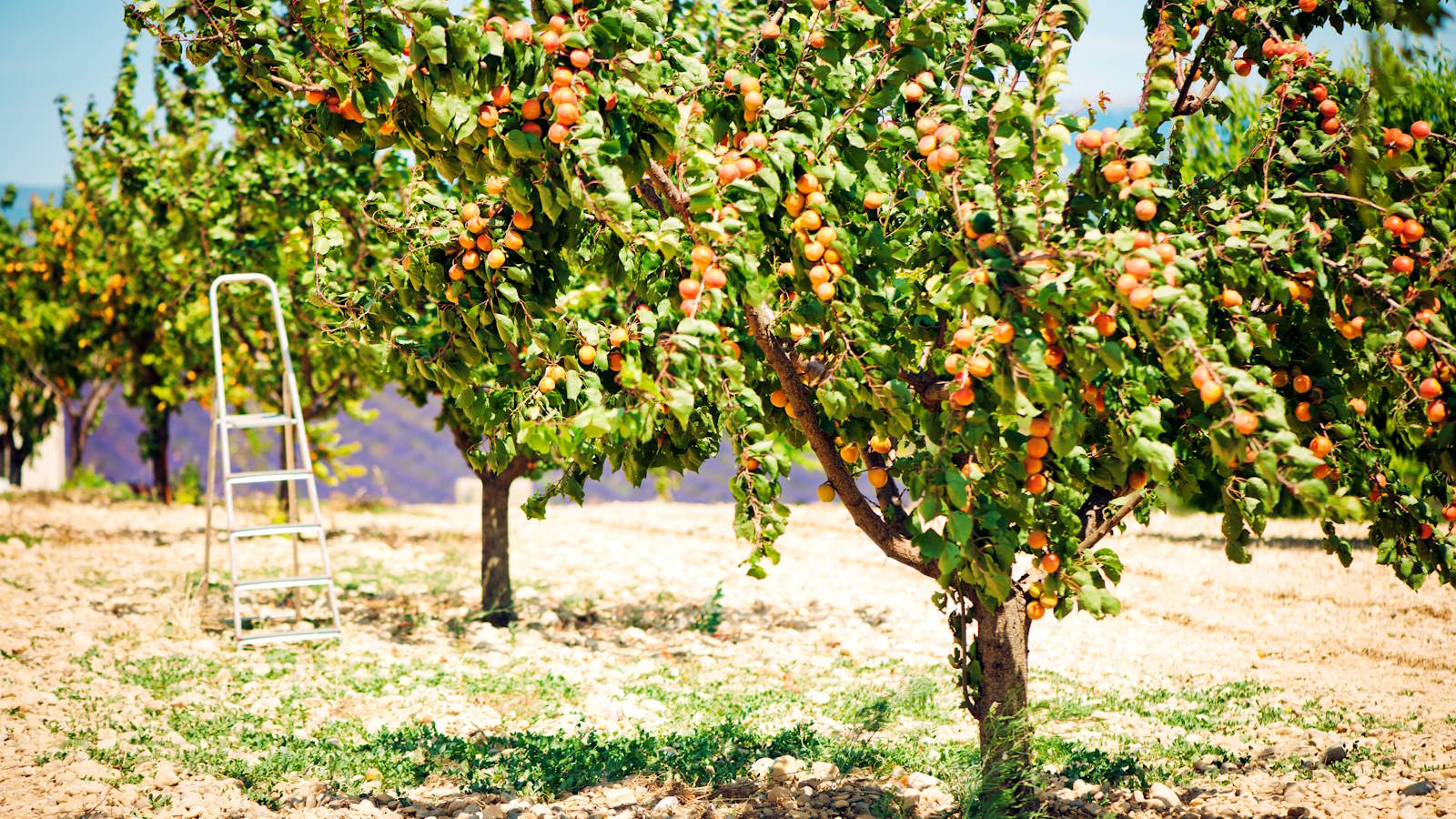
Growing apricots at home means you can enjoy these delicious and aromatic fruits plucked straight from the tree. Knowing how to prune an apricot tree means your trees can remain healthy and provide you with a superb crop of sweet apricots year-after-year.
Pruning any fruit trees is an important part of their maintenance. They may still give a crop even if you do not trim them, but the harvest will be smaller and an unpruned tree will not have the desired shape and be more at risk of health problems.
To help give you an understanding of how to prune apricots, we get advice from fruit tree experts about why and how you should prune both new and established apricot trees.
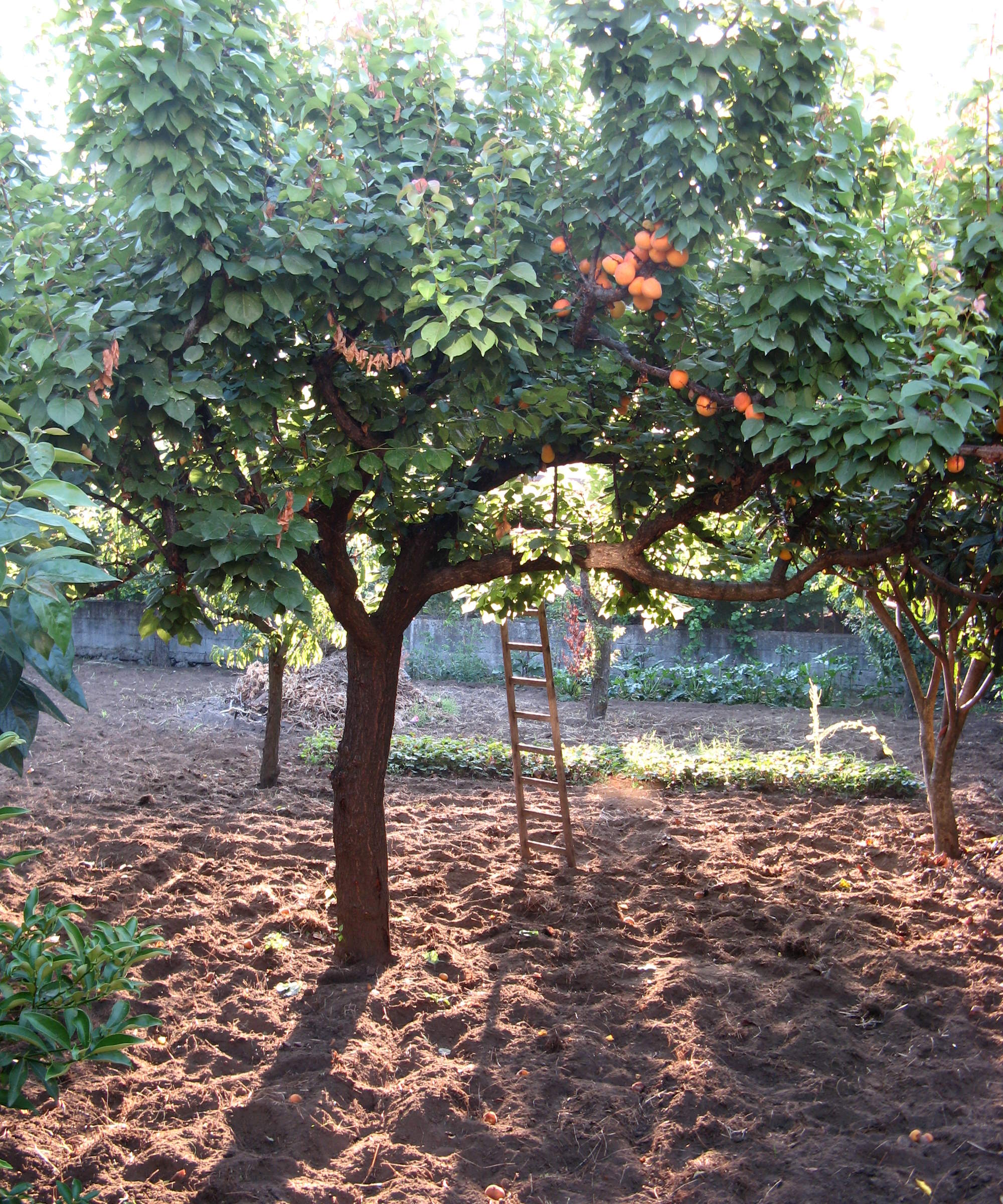
How to trim an apricot tree
The right time to prune an apricot tree is in late winter or early spring, when the tree is starting to actively grow. This is unlike other fruit trees that are pruned in winter during the middle of their dormancy, such as with apples and pear trees.
Getting the timing correct is an important rule in pruning apricots, as is always using clean and sharp garden tools to prune. The tools you may need will include pruning shears, loppers, a pruning saw, and a sturdy ladder, such as a Tripod Ladder like this one at Amazon.
How to prune a young apricot tree
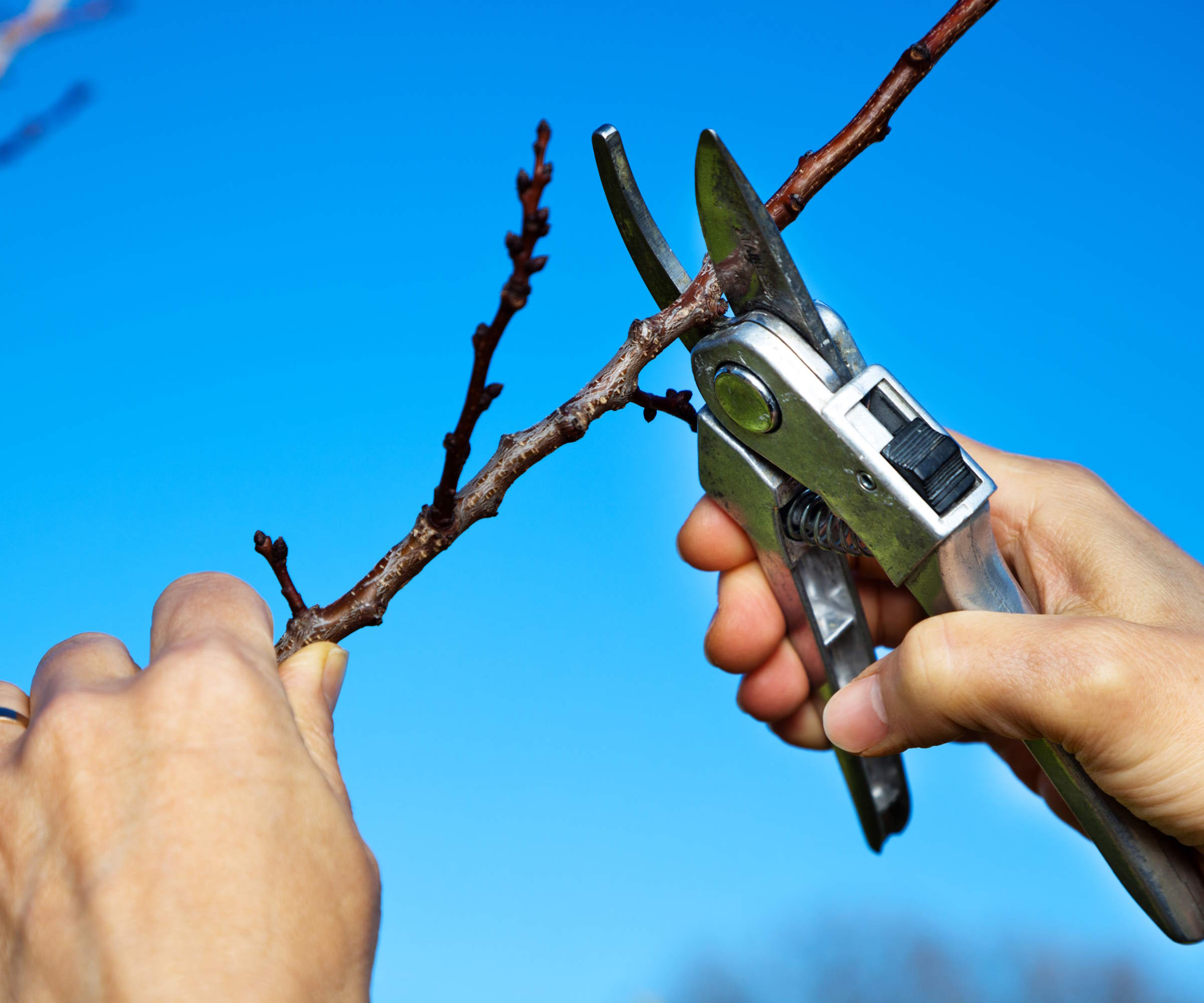
Young apricot trees need to be pruned differently to older and established apricot trees. The aim with pruning young trees is to develop their structure and shape and such formative pruning can set the tree off to a strong and fruitful start.
Joanna Glovinsky, founder of Fruitstitute, says: ‘For young apricots formative pruning, training the tree to grow with a nice balanced branch architecture that works for the size and space, is super important. This is how you raise your fruit tree right and ensure a fruitful and long lived relationship together.’
The pruning should start with removing any branches that are damaged or broken, before looking to remove any that are heading in odd angles - especially if the branch is crossing another or looks like it will rub with another in the future as it grows.
Janet Melrose, the co-author of The Prairie Gardener’s Go-To Guide for Fruit, says an emphasis should also go on removing any shoots that are ‘growing too low’ as you want to encourage a ‘bare, single trunk clean to about 18 inches’.
The fruit tree expert recommends five key steps for pruning to follow, which can help you establish a ‘healthy, productive tree and one that is easy to harvest’.
- Identify and remove damaged limbs or those that will cause damage
- Remove branches that are developing a narrow crotch and growing upwards
- Remove branches so that there is at least 6 inches between each branch
- Remove branches growing from the main trunk below 18 inches
- Shorten lateral branches to 2-4 inches with at least 1 bud on them
Removing any branches that are primarily growing upwards, rather than outwards, will help to develop an open center.
Branches that are pruned back to 2-4 inches should then be trimmed by a half-to-a-third again the following year.
Each winter going forward, you will want to remove branches growing in unwanted directions, including upwards, downwards, or inwards towards the center of the tree.
How to prune an established apricot tree
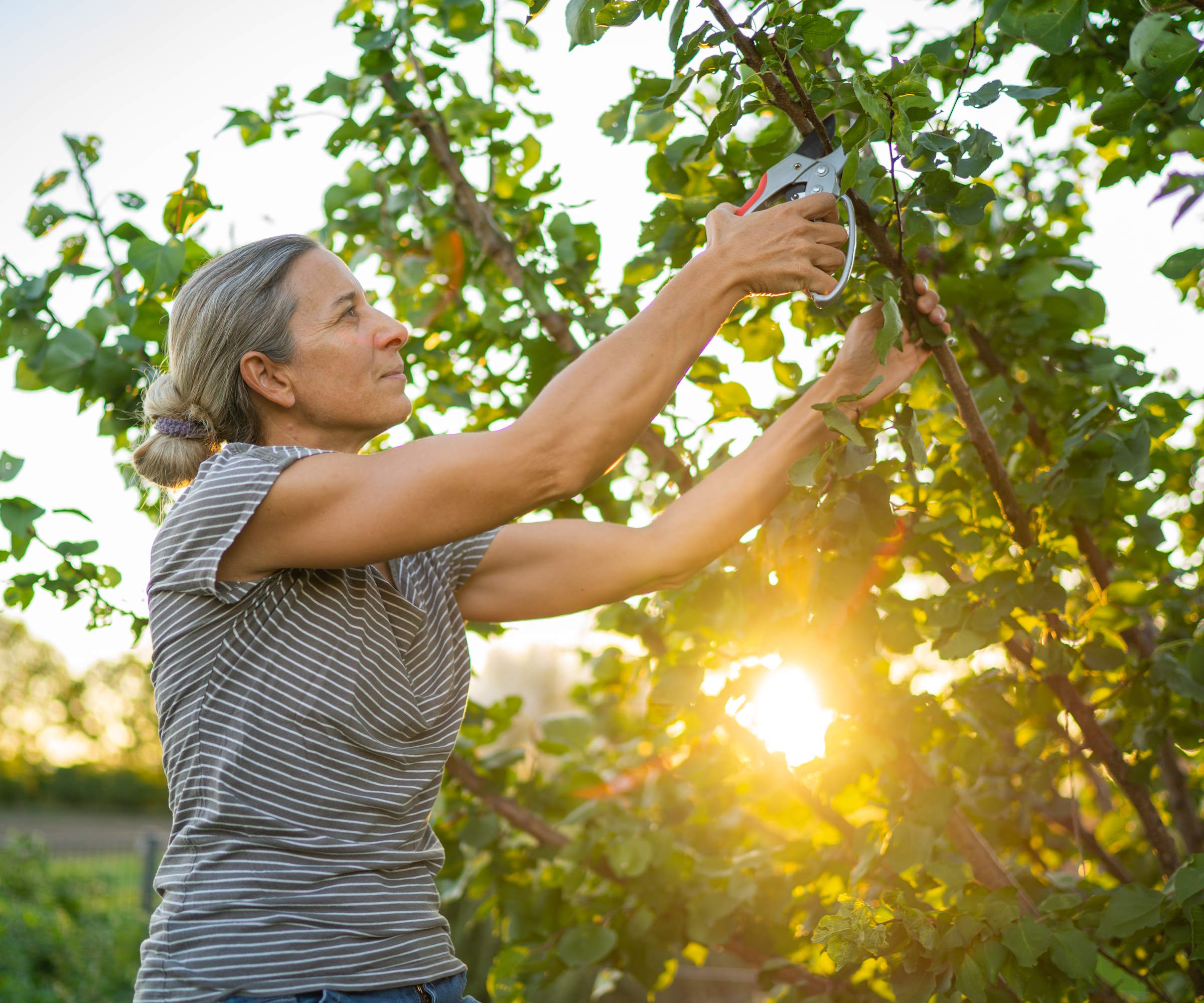
Established apricot trees are those over four years old. The method for pruning does simplify once it is older and produces fruit year-after-year. The aim for the pruning shifts slightly, from creating the shape to keeping the tree healthy and highly productive. If you developed a strong formation through pruning when young, it should mean that the trimming now the tree is established is a simple task.
As with all tree and shrub pruning, focus firstly on removing dead, diseased, and damaged wood. Also, as with a young apricot tree, identify any branches that are crossing or could rub against each other in the future - as the marks left from rubbing branches can be entry points for diseases. If two branches are crossing, then always remove the weaker of the two.
Joanna Glovinsky recommends thinning branches that are growing towards the centre and to carefully ‘manage the load’ of fruiting wood. Removing older branches that are not fruiting helps keep the tree productive.
The trees crop best on wood that is two or three years old, and the productivity of a branch drops after four years of age - so thorough pruning removes older unproductive branches and keeps a good mix of wood that is one, two, and three years old.
Keeping the most productive shoots, along with reducing the size of some branches to give the tree room to grow without overcrowding or shading the center, will mean you benefit from a great crop of apricots come summer.
‘The basics for apricot pruning are to train a tree to grow with a nice balanced branch architecture that fits in the space it has to grow in your landscape. Too much crowding and shading will reduce fruit production, so you need to make sure there is canopy clearance,’ says Joanna.
‘Per the form, stone fruit grow best with an open center form (think sun cup or a candelabra) created by evenly distributed strong scaffold branches. Also, fruit is heavy so a balanced weight distribution is important.’
To help ensure the shape of the tree remains, and you get good levels of light and air circulation through the center, Janet Melrose advises to make the right pruning cuts when pruning tree branches. She says: ‘Prune to buds that are growing outwards rather than upwards to encourage an open canopy which will let in more air and light.’
Whatever pruning you do, it is important to never remove more than 25 per cent of the tree’s branches in one go. It would be a tree pruning mistake to be too heavy-handed with the tools.
Anvil loppers that can prune branches up to a diameter of 2 inches. An ideal tool for trimming back older and harder wood before making a final, clean cut with bypass loppers, also available at Amazon
How to prune an overgrown apricot tree
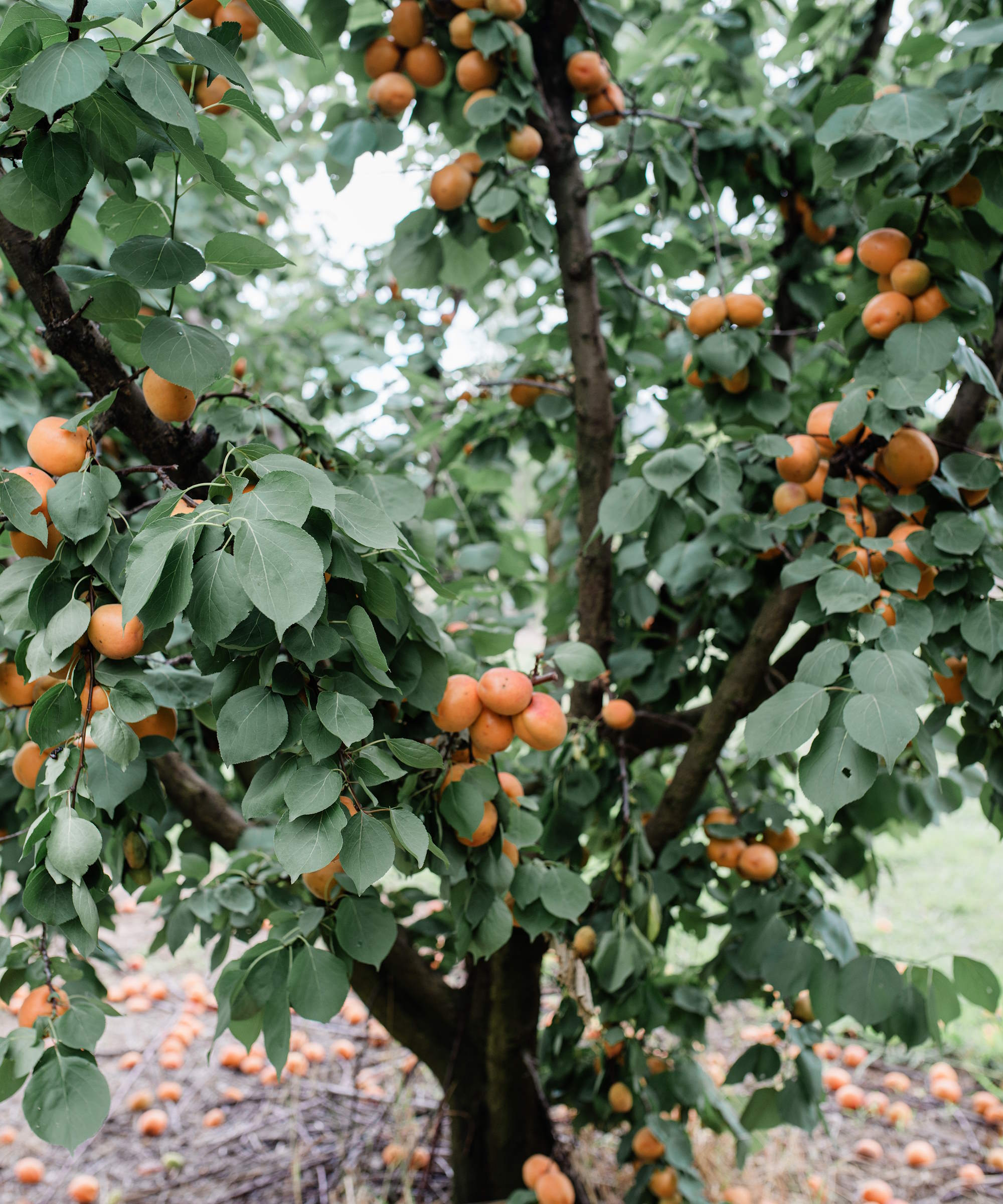
An overgrown apricot tree should be addressed over several years, as attempting to renovate it through large-scale pruning in one go would be a big fruit tree pruning mistake. Removing more than a quarter of any wood will stress the tree. It is likely that any resulting growth will be fast and erratic, while the tree will be at increased risk of pests and diseases as a result of being stressed.
To prune an old and overgrown apricot tree, you would follow many of the same principles as outlined above. Remove dead, diseased, and damaged branches, along with those that are crossing and rubbing.
Then look at the oldest wood. By removing a selection of the oldest branches each year, it should open up the center and help to control the shape. Aim to renovate the tree over a series of years to get it to a point where the shape is desirable and it has a good mixture of wood in the canopy.
FAQs
Why is pruning apricot trees important?
Pruning offers a wealth of benefits to apricot trees. Regularly pruning fruit trees improves their health and also makes them more productive - so that means you benefit from a better crop of apricots.
Trees with a good shape and a balanced framework of branches, that have had any damaged limbs removed through pruning, will also not be as susceptible to pests and diseases.
How do you prune a patio apricot?
Patio apricots are great fruit trees to grow in pots for small backyard ideas. They are ideal for patios, decks, or to grow on balconies, as these dwarf varieties tend to grow to around 40-50 inches in height.
Patio apricots are simple to prune, just focus on trimming any dead, diseased, damaged, or crossing branches from the tree and then remove older branches to retain the shape and productivity of the tree.
If you want to enjoy growing fruit inside the house, there are options thanks to modern dwarf varieties of many species. Apricots can be one of the best indoor fruit trees, but will need the use of artificial grow lights to give them the hours of light they need during the winter months.







